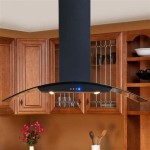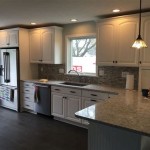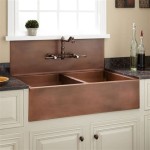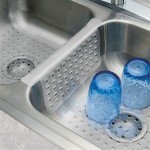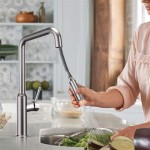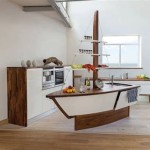Normal Depth of Kitchen Worktops: A Comprehensive Guide
The depth of a kitchen worktop, also known as a countertop, is a crucial consideration in kitchen design and functionality. It significantly impacts usability, accessibility, and overall ergonomics within the kitchen space. A standard depth has emerged over time, balancing practical needs with spatial efficiency. Understanding the commonly accepted dimension and the reasons behind it is essential for homeowners, contractors, and kitchen designers alike.
This article aims to provide a comprehensive overview of the normal depth of kitchen worktops, exploring the historical context, the advantages and disadvantages of deviating from the standard, and the factors influencing this dimension. Furthermore, it will delve into considerations for specific kitchen layouts and user needs.
The consistent implementation of a standard depth allows for streamlined manufacturing processes, availability of compatible appliances, and predictable installation. This standardization provides a foundation for countless kitchen designs, ensuring a harmonious blend of form and function.
The Standard Dimension: 600mm (24 Inches)
The widely recognized standard depth for kitchen worktops globally is approximately 600 millimeters (mm), which equates to roughly 24 inches. This measurement is taken from the front edge of the worktop to the wall behind it. This depth is not arbitrary; it represents a careful consideration of multiple factors, including the typical reach of an adult user, the dimensions of base cabinets, and the space required for appliances.
The 600mm depth provides sufficient surface area for various kitchen activities, from food preparation to placing small appliances. It also allows for a comfortable working distance without requiring excessive stretching or reaching. This dimension is particularly important when considering the placement of sinks and cooktops, which need adequate surrounding space for safe and efficient use.
The prevalence of this standard depth facilitates the seamless integration of appliances such as dishwashers, ovens, and refrigerators. These appliances are typically designed to fit within the confines of a standard base cabinet depth, which aligns with the 600mm worktop. This ensures a sleek, integrated look and eliminates the need for custom modifications or awkward gaps.
Furthermore, the 600mm dimension allows for the installation of a backsplash, which protects the wall from spills and splashes. The backsplash often extends upwards from the back edge of the worktop, and the standard depth provides enough space to accommodate this feature without compromising the usable surface area.
Advantages of Adhering to the Standard Depth
Choosing a kitchen worktop with the standard 600mm depth offers numerous advantages. One of the most significant benefits is the wide availability of ready-made cabinets and appliances designed to seamlessly integrate with this dimension. This simplifies the design and installation process and reduces the potential for costly custom modifications.
Another key advantage is the ergonomic comfort provided by the standard depth. It allows for a comfortable working distance without straining the user, promoting efficient movement and reducing the risk of repetitive strain injuries. This is particularly important for individuals who spend a significant amount of time in the kitchen.
Standard depth worktops also promote a visually appealing and consistent aesthetic throughout the kitchen. The uniform depth creates a clean, streamlined look that is easy to maintain and complements a wide range of design styles. This uniformity contributes to a sense of order and harmony in the overall kitchen space.
Furthermore, adhering to the standard depth simplifies future renovations or upgrades. Replacing a worktop with the same dimensions is a straightforward process, as it eliminates the need to modify existing cabinets or appliances. This can save time, money, and hassle in the long run.
From a cost perspective, standard-depth worktops are generally more affordable than custom-made options. The mass production of these worktops allows for economies of scale, resulting in lower prices for consumers. This makes the standard depth a budget-friendly choice without compromising on quality or functionality.
Deviations from the Standard: Considerations and Implications
While the standard 600mm depth offers numerous advantages, there are situations where deviating from this dimension may be necessary or desirable. These deviations can be driven by specific design requirements, spatial constraints, or user preferences. However, it is crucial to carefully consider the implications of such deviations before making a decision.
One common reason for deviating from the standard depth is to accommodate specific kitchen layouts. For example, in a very small kitchen, a narrower worktop may be necessary to maximize available floor space. Conversely, in a large kitchen, a deeper worktop may be desired to provide more surface area for food preparation and storage.
Another consideration is the user's height and reach. Individuals who are significantly taller or shorter than average may find the standard depth uncomfortable. In such cases, adjusting the worktop depth can improve ergonomics and reduce the risk of strain or fatigue. However, modifying the depth may require custom-made cabinets and appliances, which can add to the overall cost.
Aesthetic considerations can also influence the choice of worktop depth. Some homeowners may prefer a deeper worktop to create a more luxurious or spacious feel. Others may opt for a shallower worktop to achieve a minimalist or contemporary look. However, it is important to ensure that the chosen depth does not compromise functionality or usability.
When deviating from the standard depth, it is essential to carefully consider the impact on appliance compatibility. Standard appliances are designed to fit within the confines of a standard base cabinet depth, which aligns with the 600mm worktop. Modifying the worktop depth may require custom modifications to appliances or cabinets, which can be costly and time-consuming.
Furthermore, it is important to consider the impact on accessibility. A deeper worktop may make it difficult for individuals with limited mobility to reach items at the back of the countertop. A shallower worktop may not provide enough space for users with larger bodies to work comfortably. Careful planning and consideration of user needs are essential to ensure that the chosen depth is both functional and accessible.
The thickness of the worktop material also plays a role. Thicker materials, such as solid wood or concrete, may require a deeper worktop to provide adequate support and stability. Thinner materials, such as laminate or acrylic, may be suitable for shallower worktops. The choice of material should be carefully considered in relation to the desired depth.
In island designs, the depth of the worktop takes on added importance. Islands often serve as focal points in the kitchen and can be used for a variety of purposes, including food preparation, dining, and socializing. The depth of the island worktop should be carefully considered to accommodate these activities and create a comfortable and functional space.
Ultimately, the decision to deviate from the standard worktop depth should be based on a careful consideration of all relevant factors, including spatial constraints, user needs, aesthetic preferences, and budget limitations. Consulting with a qualified kitchen designer or contractor can help ensure that the chosen depth is both functional and visually appealing.
Careful planning and accurate measurements are paramount when deviating from the standard. Inaccurate measurements can lead to costly mistakes and delays. It is essential to double-check all dimensions and ensure that they are consistent with the overall kitchen design.
In summary, while the standard 600mm depth offers numerous advantages, deviations from this dimension may be necessary or desirable in certain situations. By carefully considering the implications and consulting with qualified professionals, homeowners can ensure that their kitchen worktops are both functional and visually appealing, regardless of the chosen depth.

Height And Depth Of Kitchen Worktop Valcucine

Height And Depth Of Kitchen Worktop Valcucine

House Of Worktops Solid Wood Kitchen In

A Homeowner S Guide To Kitchen Counter Height And Depth

Kitchen Ergonomics And Height Of Your Marble Countertop

Understanding Kitchen Worktop Height And Depth Dimensions

Kitchen Worktop Height Depth Info Expert Advice

What Is The Standard Depth Of Kitchen Countertops

Height And Depth Of Kitchen Worktop Valcucine

Diy Templating Of Granite Kitchen Worktops Craftsman Ltd Reading Berkshire
Related Posts

